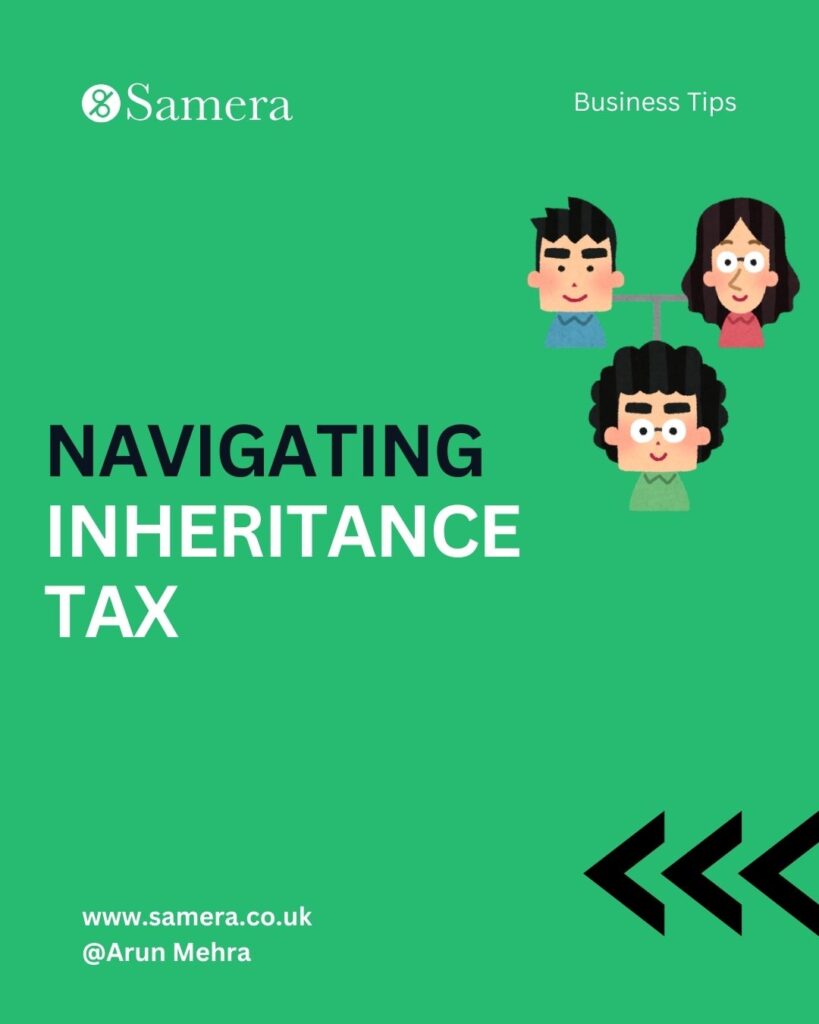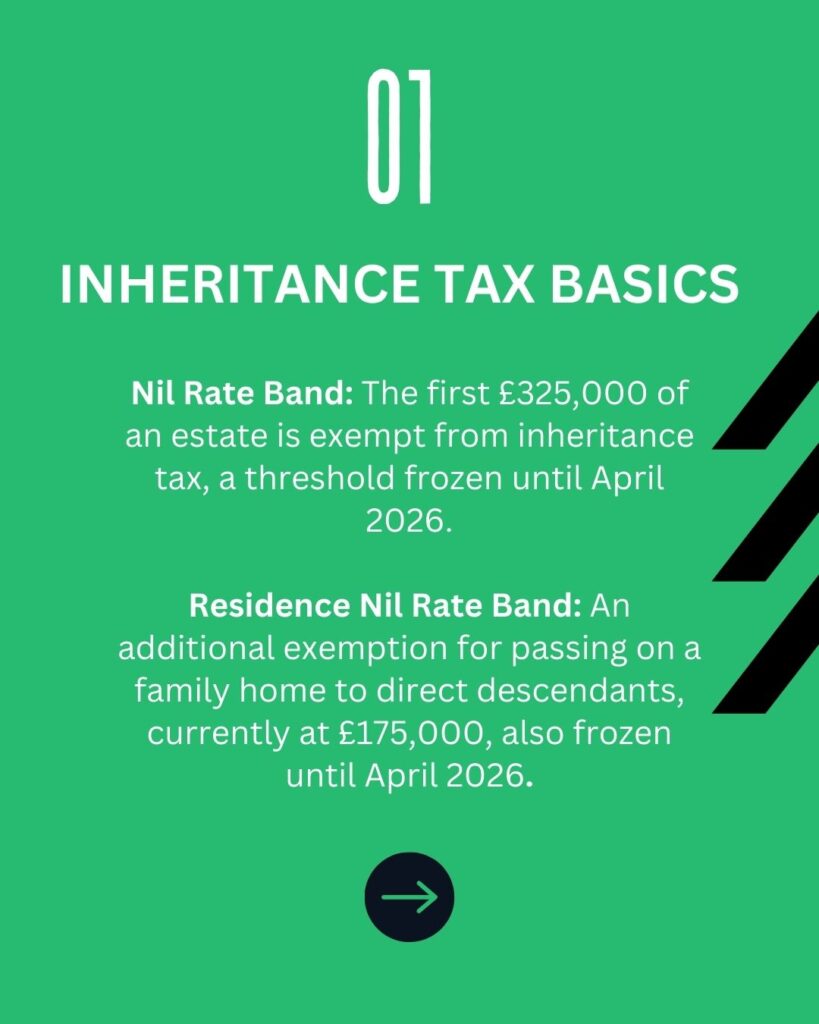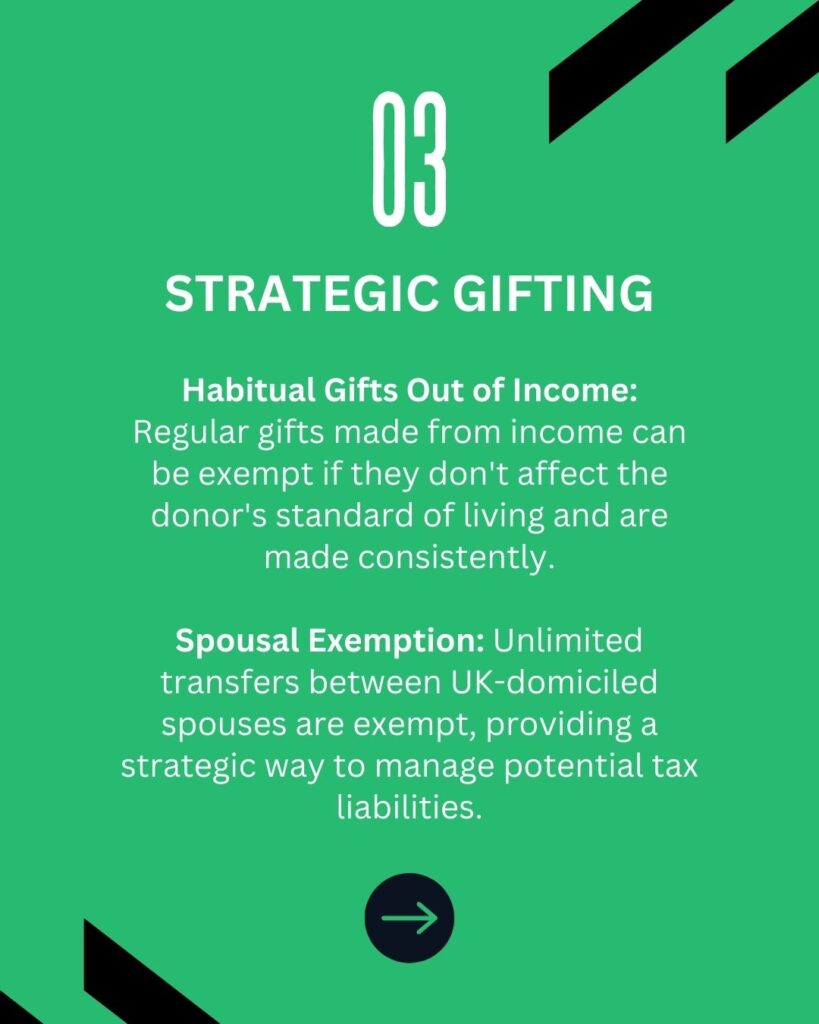The inheritance tax nil rate band has been frozen at its current level of £325,000 since 6th April 2009. The nil rate band is the amount of your estate that is exempt from inheritance tax.
It will remain at its current level of £325,000 until 5th April 2026 – a 17-year freeze! However, since 6th April 2017, a new additional nil rate band has been available for the ‘family home’.
Click here to read our guide on income tax and National Insurance.
Generally speaking, effective inheritance tax planning should be carried out on a long-term basis. However, it is worth remembering the following points, which should be considered on an annual basis.







Annual exemption
The first £3,000 of gifts made by any individual during each tax year is completely exempt for inheritance tax. In addition to this, if the previous year’s annual exemption was not fully utilised, it can be carried forward into the following (current) tax year.
This means, in one tax year you are able to have up to £6000 of gifts that will be exempt from any tax only if you have not made any gifts during the previous tax year.
This exemption is specific to a per person basis, so married couples can also make gifts of £3,000 each.
Small Gifts Exemption
Gifts of up to £250 per tax year made to any one individual are also exempt from any inheritance tax and do not count towards the annual exemption. These types of small gifts are an exemption for you as you can make as many of these gifts as you like to different people.
However, the annual exemption cannot be used for further gifts to the same recipient in the same tax year.
Habitual Gifts Out of Income
Habitual gifts out of income are an exemption from inheritance tax, in order for these gifts to be classed as ‘habitual’, they need to be made consistently for a number of years. Which is why it is important to remember to keep these up every tax year.
The Family Home
An additional nil rate band is available for the ‘family home’ for any deaths occurring after 6 April 2017. This exemption is only available on a property which has been the deceased residence at some point during their life. If the deceased has passed while owning more than one or multiple qualifying properties, the personal electives can elect which property this exemption should apply to.
The exemption is only applied once the property is passed. This is usually done to a direct descendant of the deceased and in this case, any stepchildren, foster children or adopted children are all accorded the same status as one another for this sole purpose.
Similar to the £325,000 nil rate band, any unused proportion of the exemption will pass to the deceased’s partner or spouse.
When a person downsizes or ceases to own a home after 8 July 2015, the residence nil rate band is available to them as well as assets of an equivalent value, up to the value of the additional nil-rate band, are passed to direct descendants.
The residence nil-rate band that was introduced in 2017/18 and increased from £100,000 to its current value to £175,000. This level is set to remain until 5 April 2026.
Click here to read more about inheritance tax.
Inheritance Tax: Example
Margaret divorced her husband many years before her death in June 2021.
She leaves her estate, worth £600,000, to her daughter.
Margaret’s estate includes her former home, which is worth £250,000 at the time of her death. The residence nil rate band available for 2021/22 exempts £175,000 of the value of Margaret’s former home. This reduces her taxable estate to £425,000 before deduction of her main nil rate band of £325,000, which reduces it to £100,000.
The IHT payable on Margaret’s estate at 40% is thus £40,000. The residence nil rate band is withdrawn from estates worth in excess of £2 million (this threshold is also frozen until 5th April 2026).
This withdrawal is at the rate of £1 for every £2 by which the estate exceeds £2 million. Any mortgages or other loans secured over a property will have to be taken into account when allocating the exemption. For example, where the deceased held a property worth £250,000 which was subject to a mortgage of £180,000, the exemption will be limited to just £70,000.
Further Information on Accounts & Tax
Our team of specialist accountants and tax experts can help manage, process and structure your business’s finances. From management accounts and payroll & pensions to tax planning and cash flow management, we can take care of the full back-office function of your business.
Book a free, no-obligation consultation with one of the team to find out how we can make your accounts & tax easier, quicker and cheaper.
Make sure you never miss any of our articles, webinars, videos or events by following us on Facebook, LinkedIn, YouTube and Instagram.



